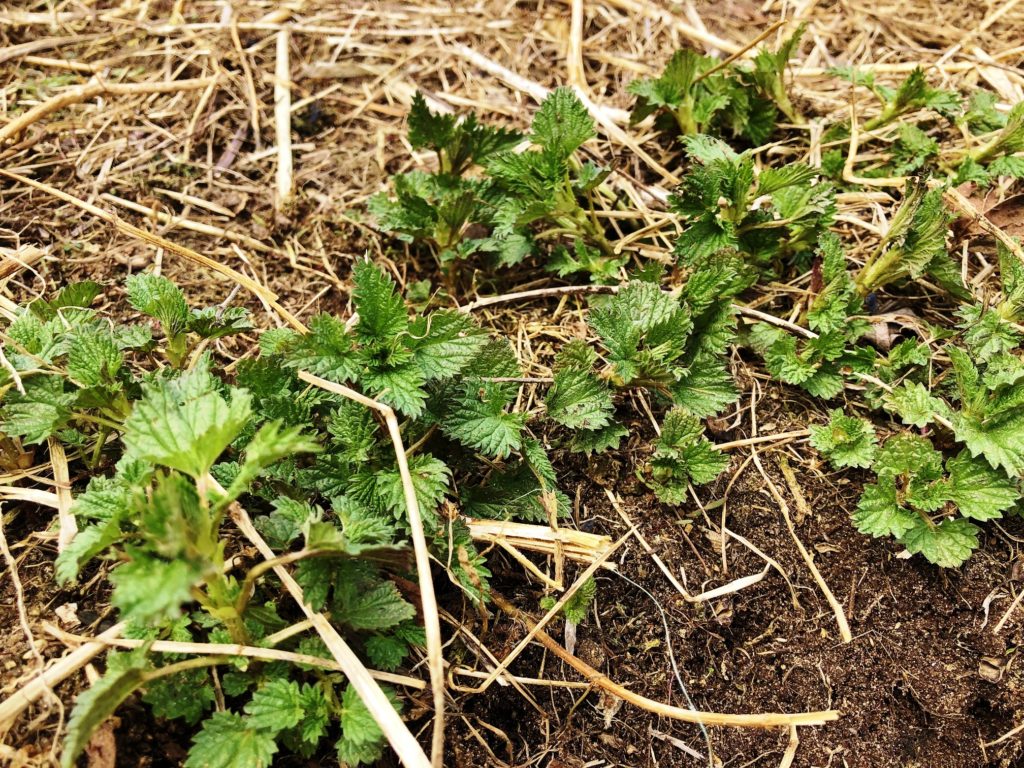Back Home by Chris Hardie
» Download this column as a Word document
» Download the photo that accompanies this story
» More columns by Chris Hardie
» Chris Hardie’s headshot
From this nettle, danger, we pluck this flower, safety. – Shakespeare, Henry IV
“If you look at the nettle, it will know that you’re going to touch it and it won’t sting.”
I was only 5 years old, but I had plenty of reason to doubt that advice from my great-uncle Leland Clair. I knew those green plants that were plentiful around the farm were something to avoid. And he loved to tease me.
Seeing my hesitation, Uncle Leland grabbed a nettle leaf.

“See,” he said. “It doesn’t bite if you look at it.”
I slowly reached out and touched the leaf. To my surprise the sting was not there.
Urtica dioica, or nettles, are one of the first green plants in the spring. Their leaves have hollow stinging hairs called trichomes that inject histamine and chemicals into skin, producing a burning sensation. Despite their reputation as plants to avoid, nettles have long been used as food, medicine, tea and as a textile material. I would avoid nettle underwear, though.
After a long winter in northern climates, one of the first green plants of early spring is a welcome sight. A few years ago my wife, Sherry, decided to make nettle soup — a popular food use for the plant. The key to making them edible is to harvest young and tender leaves. Then slightly steam them in a covered pan with a little water. The burning chemicals are released in the form of a dark liquid that is discarded.
The problem with the recipe Sherry followed was that it didn’t specify how many nettles to use, vaguely stating “two bunches.” Believing more would be better than less, Sherry prepared extra. The bright-green soup was a wee bit rich in chlorophyll. I’ve never eaten the scrapings off the bottom of a lawn mower, but that’s how I would describe the taste.
The real taste is similar to spinach and cucumber. The leaves can be dried to make an herbal tea and it’s even used in beer.
As herbs, nettles are used to treat rheumatism and gout as well as disorders of the kidneys, urinary tract or gastrointestinal tract. It’s the latter that has a severe test during the annual nettle-eating contest held each year in England.
The tiny village of Marshwood in West Dorset is where the Bottle Inn hosts the gastronomical challenge that makes eating dozens of hot dogs seem rather boring. The contest supposedly began when two farmers at the inn argued over who had the longest stinging-nettle stalk in their fields. One farmer came in with a 15-foot stalk and said if anyone had a longer one, he would eat the difference. Sure enough, another farmer brought in a 16-footer; the loser ate a foot of raw stinging nettle.
The challenge’s contestants are given 2-foot stalks. They need to strip and eat as many leaves as they can in an hour. This past year’s winner — the aptly named Philip Thorne — ate 104 feet of leaves. Contestants wash down their numb mouths with lots of beer. They then experience several days of gastrointestinal distress that apparently gives new meaning to green death.
Another traditional use of nettles among healers is called urtication, or flogging with stalks of nettles to provoke inflammation. I have the same reaction when I watch too much C-SPAN — which could be defined as any. At least the healers hope to treat rheumatism, and improve circulation and fatigue, not inflict it.
It turns out Uncle Leland was at least partially correct. If one looks closely at a nettle leaf, it will be apparent that hairs point from the top of the leaf to the bottom. So if the harvester runs his or her finger from the top to the bottom — or grabs the center of the leaf — the harvester will likely not be stung. And it helps that finger tips and palms have a little tougher skin.
But when weeding the garden, it’s difficult to see all the plants. So being stung when coming into contact with a nettle goes with the territory.
Uncle Leland died 45 years ago, but I always think of him when I’m stung by an unsuspecting nettle.
I should have looked at it first.
Chris Hardie spent more than 30 years as a reporter, editor



